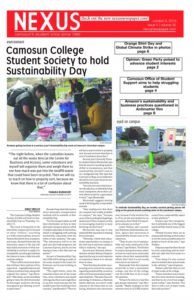For the first time in Canadian history, the Green Party is poised to win several seats within the House of Commons. At the time of writing, the CBC poll tracker has the Greens polling at 10.8 percent nationally, taking most of their new support from the now weakened NDP. Current polling projects the Greens potentially winning as many as 10 seats in the House of Commons during the October election.
It is also likely that the Liberal Party will be re-elected with a minority government, which allows for the possibility of the Greens to negotiate their way into government. A Liberal minority government supported by the Green Party has gone from being a pipe dream to a real possibility.
What does this mean for Canadians, and, more specifically, for students?

For current and future students, the Green Party has committed to abolishing college and university tuition if elected, arguing that tuition costs widen Canada’s wealth gap. This policy would drastically improve the availability of higher education to working class Canadians. It would also eliminate the significant financial burden associated with multi-year medical and law degrees.
For current and previous students, the Green Party has also committed to abolishing student debt that exceeds $10,000, as well as extending grant availability to graduate and doctoral students.
The Green Party is also proposing investment toward a green economy, not dissimilar to the American “Green New Deal” proposed by US congresswoman Alexandria Ocasio-Cortez and senator Bernie Sanders. To this end, the Green Party has made commitments to opening new green apprenticeship programs for Canadians as well as supporting youth employment and research and development within needed Canadian sectors. The Greens also proposed establishing Green Worker Training Programs to retrain and employ fossil-fuel workers in renewable-energy industries.
This investment to restructure the Canadian economy into a green powerhouse has the potential to create new employment for all Canadians. This job creation and investment into green industries would lead to a strong economy for newly graduated students across Canada.
In addition, having the Greens elected to government will help to begin positioning Canada as a leader on the world stage in the global effort to circumvent climate change. The Greens have pledged to end expansion of the Alberta oilsands and to redirect federal subsidies from fossil fuels, allowing Canada to become a world leader in the climate crisis.
However, the Greens still need to cross the hurdle of getting elected. The base of the NDP is currently being split between the Greens and the Liberals, putting the NDP in a weak electoral position. While the Greens are in the fortuitous position of siphoning votes away from the NDP, they still need to put in the work to campaign, canvass, and make their case to Canadians.
Green Party leader Elizabeth May needs a strong debate performance to propel her candidates to victory. May needs to outflank NDP leader Jagmeet Singh to the left on issues of climate, economic populism, tuition abolishment, student-debt forgiveness, and a green restructure of the Canadian economy.
The English-language debate on Monday, October 7—which has happened by the time you read this—will be the make or break for the Greens. While Justin Trudeau’s Liberals and Andrew Scheer’s Conservatives battle it out for the first and second places in terms of seats, May and Singh will attempt to appeal to the Canadian working class and left-wing voters for the ever-important third place.
There’s a lot at stake for students here. Hopefully everyone’s paying attention.
